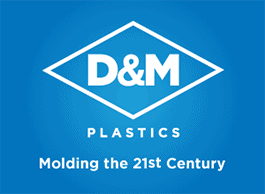Injection molding is the most common method of manufacturing high-volume plastic parts. This versatile fabrication process accommodates a vast number of part sizes, complexities, and applications. Hundreds of plastic materials are compatible with injection molding, including resins developed for specific end-use properties, like impact resistance or tensile strength.
As an industry leader in injection mold services, D&M Plastics works with many materials, including:
